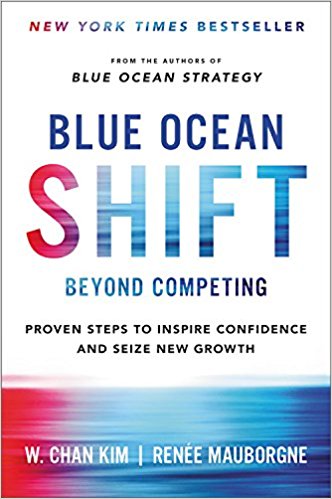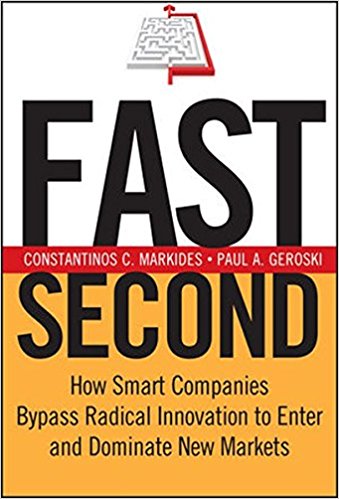business
The Business of Biom* - Part 2
Tue, 2017/12/19 - 20:43 — nhoeller  I recently read Blue Ocean Shift: Beyond Competing - Proven Steps to Inspire Confidence and Seize New Growth, an updated version of the earlier book Blue Ocean Strategy (also by Kim and Mauborgne). Both books describe a business strategy based on creating new niches, rather than direct competition. Key approaches include:
I recently read Blue Ocean Shift: Beyond Competing - Proven Steps to Inspire Confidence and Seize New Growth, an updated version of the earlier book Blue Ocean Strategy (also by Kim and Mauborgne). Both books describe a business strategy based on creating new niches, rather than direct competition. Key approaches include:
- Identifying and eliminating costs for deliverables that do not provide value in the market.
- Identifying and delivering untapped value that has been ignored by the market leaders.
- Identifying and targeting ‘non-customers’ of the market leaders.
The Blue Ocean strategy creates potential opportunities for biom*. Although the authors claim that they are not delivering disruptive innovation, they are clearly trying to dramatically change the game by increasing value, rather than competing on price or marginal features. Blue Ocean Shift helps businesses manage risk by describing a step-by-step implementation process. Showing the connections between biom* opportunities and the Blue Ocean strategy could help reduce the perceived risk of biom* projects. In turn, biom* could help companies identify new Blue Ocean opportunities.
In contrast to Fast Second and its focus on products/processes, the Blue Ocean strategy seems more aligned with systems biom*. Rather than relying on a technological advance to create new markets, the focus is on building or reorganising relationships among existing actors, developing new business strategies, and strengthening innovation portfolios.
Fast Second mentions strategic innovation as a way for businesses in mature markets to retain their competitive edge but almost as an afterthought. Ideally, businesses should explore both approaches, depending on the specific circumstances.
- nhoeller's blog
- Login or register to post comments
The Business of Biom* - Part 1
Tue, 2017/12/05 - 20:03 — nhoellerISO/TC 266 wants to engage business and industry to better understand how biom* could make a more significant impact. One of the challenges is that we tend to speak the language of biology, rather than the language of business. How does business go about innovating?
 A colleague on the ISO/TC 279 Information Management project suggested Fast Second: How Smart Companies Bypass Radical Innovation to Enter and Dominate New Markets by Markides and Geroski. This book describes the lifecycle of disruptive innovations:
A colleague on the ISO/TC 279 Information Management project suggested Fast Second: How Smart Companies Bypass Radical Innovation to Enter and Dominate New Markets by Markides and Geroski. This book describes the lifecycle of disruptive innovations:
- Development of a new technological discovery or principle (usually in academic research or labs).
- Market exploration/creation by entrepreneurs/startups (understand technology, create wide variety of products, identify target clients).
- Market consolidation, typically by large companies that have the required production, delivery and support capabilities (develop and promote a dominant design).
- Market expansion through strategic innovation (block competitors from grabbing market share).
A recent example is artificial intelligence. The underlying principles of modern AI were initially explored in the 1960s through the 1980s, but fell from favor in the latter part of the 20th century due to the limitations of current hardware and software. The market exploration phase restarted early in the 21st century, driven by the availability of significantly more powerful hardware and ‘deep learning’ algorithms. Numerous players sprung up hoping to grab market share. Recently, large technology companies are beginning to consolidate the ‘big data’ markets, with some of them already exploring strategies for broadening market penetration through lowering barriers to client access.
Fast Second suggests that most disruptive innovations are 'supply-push', and therefore relevant to biom* innovations that follow the 'biology to design' pathway. A few biom* examples come to mind. Self-cleaning surfaces (such as the Lotus Effect and SLIPs) as well as structural color have led to various products trying to enter a range of market niches, including Lotusan®, Sharlet, and Mirasol. Velcro® is one of the few biomimetic innovations that has reached the consolidation/expansion phases, possibly because the ‘dominant design’ emerged early in the process.
Given that biom* promotes its disruptive potential, it would be worthwhile exploring the lifecycle of biom* innovation. Are biom* concepts not sufficiently developed or generalized so that entrepreneurs can built startups around them? Are there gaps in the supporting components, methods and tools required for market success, similar to what happened in the early days of AI? Are biom* innovations perceived as too different/risky? Are the market potentials unclear? Stories from the Trenches of Biomimetic Innovation: Ideation and Proof of Concept in ZQ21 is the first in a series of articles following four biom* case studies from ideation through to commercialization.
What do you think?
